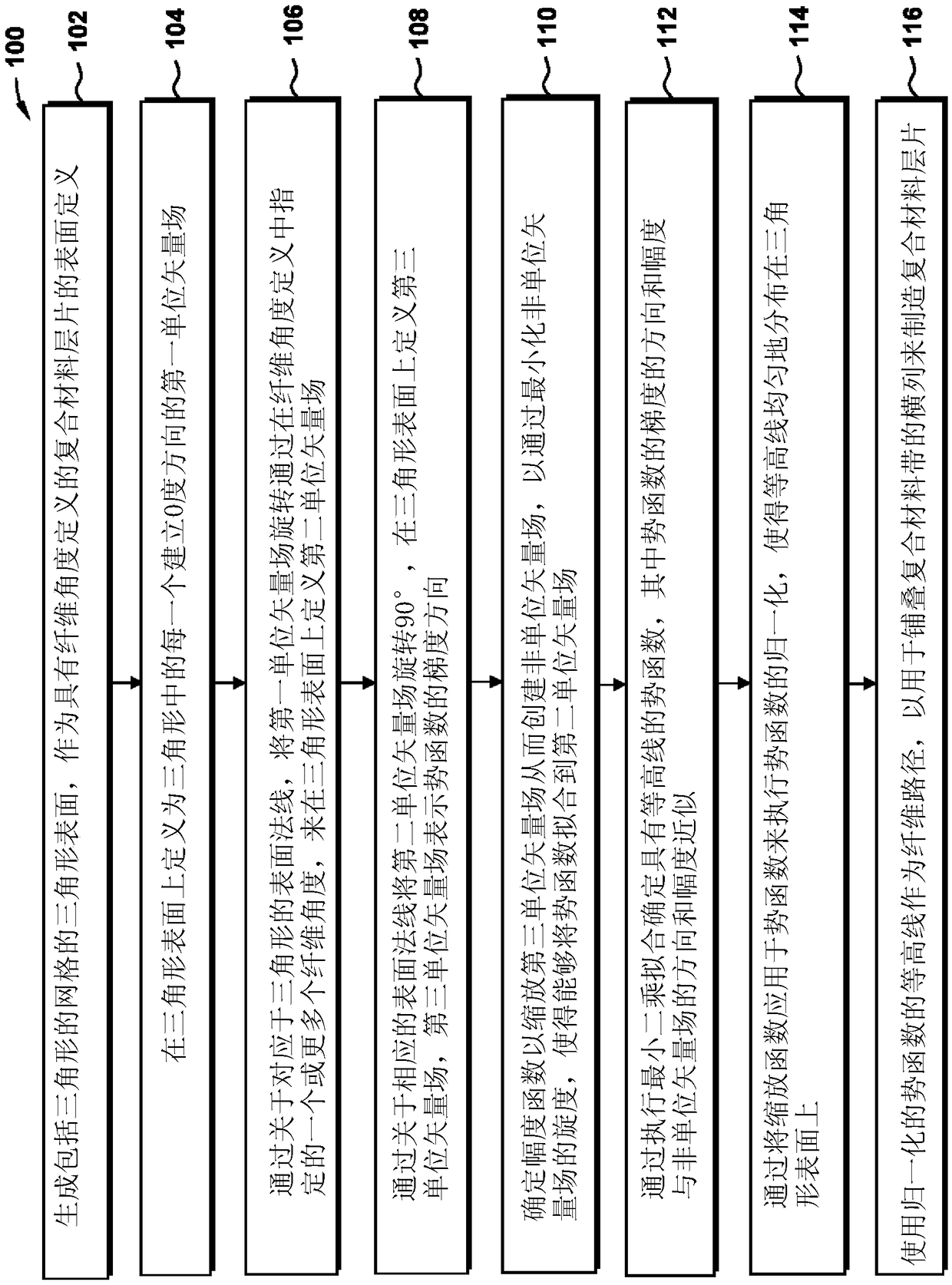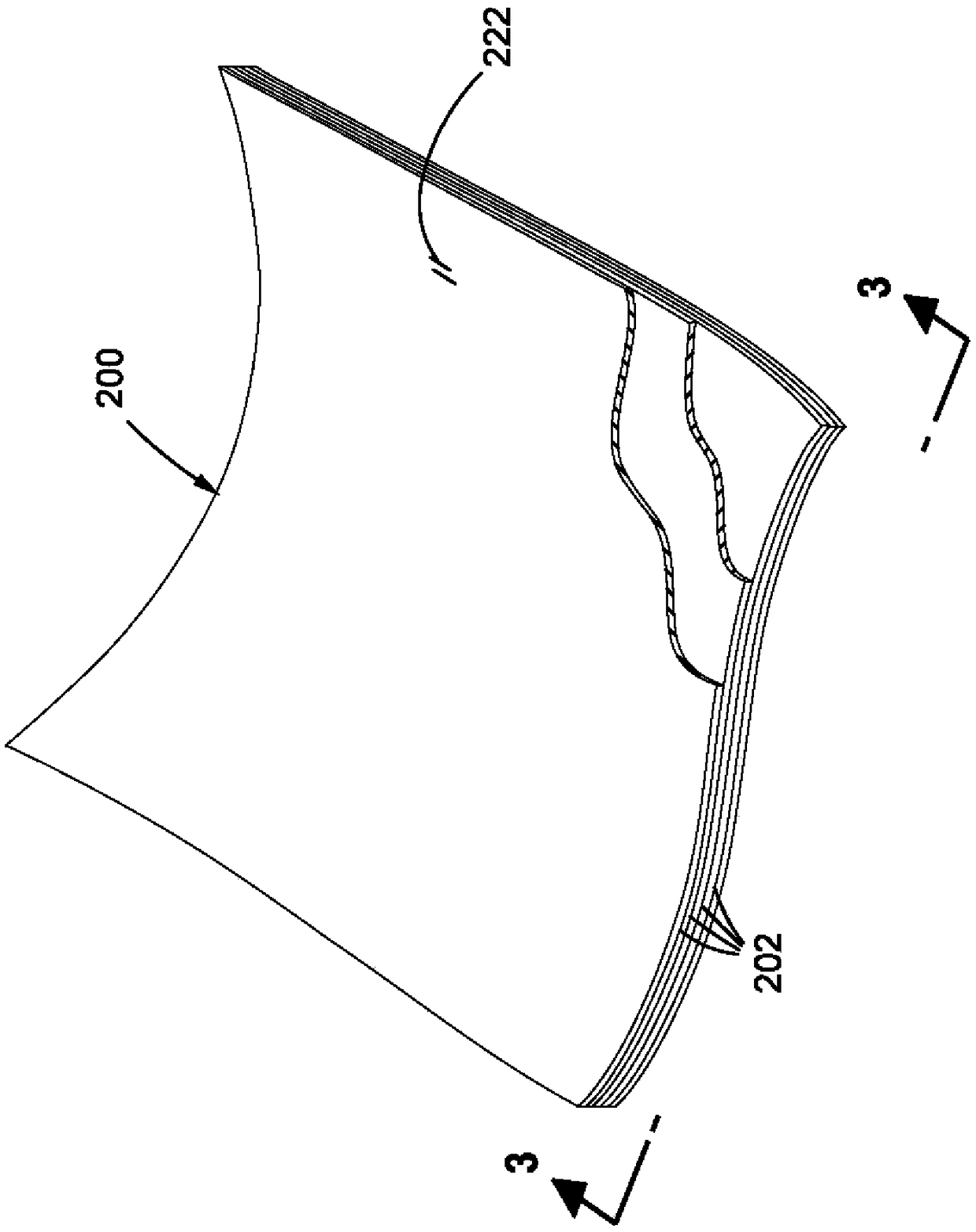System and method for determining the direction and spacing of fiber paths for a composite ply
A composite material layer and composite material technology, applied in the direction of analyzing materials, complex mathematical operations, comprehensive factory control, etc., can solve problems such as non-parallel, not considered, and inability to consider the influence of convergence and manufacturability
- Summary
- Abstract
- Description
- Claims
- Application Information
AI Technical Summary
Problems solved by technology
Method used
Image
Examples
Embodiment 1
[0173] Embodiment 1. A method of determining the direction and spacing of fiber paths of a composite ply of a composite layup, taking into account surface definitions and fiber angle definitions having one or more fiber angles, comprising the steps of:
[0174] generating a surface approximation of the surface definition comprising a triangular surface, the triangular surface comprising a triangular mesh, the composite ply having at least one of the following characteristics: the surface definition has a non-planar profile, the fiber angle definition Contains non-constant fiber angles;
[0175] defining for each triangle a first unit vector field on the triangular surface that establishes a 0 degree direction from which one or more fiber angles are measured;
[0176] A second unit vector field is defined on the triangular surface by rotating the first unit vector field through the one or more fiber angles specified in the fiber angle definition with respect to the surface norm...
Embodiment 2
[0182] Embodiment 2. the method as described in embodiment 1, also comprises the following steps:
[0183] determining a second potential function that scales the third unit vector field by minimizing the deviation between the direction of the non-unit vector field and the direction of the gradient of the potential function while also adjusting the magnitude function , to improve the alignment of the contour lines with the second unit vector field.
Embodiment 3
[0184] Embodiment 3. the method as described in embodiment 1, also comprises the following steps:
[0185] determining a third potential function that improves the contour line from the second unit by minimizing only the deviation between the direction of the third unit vector field and the gradient direction of the potential function Alignment of vector fields.
PUM
 Login to View More
Login to View More Abstract
Description
Claims
Application Information
 Login to View More
Login to View More - R&D
- Intellectual Property
- Life Sciences
- Materials
- Tech Scout
- Unparalleled Data Quality
- Higher Quality Content
- 60% Fewer Hallucinations
Browse by: Latest US Patents, China's latest patents, Technical Efficacy Thesaurus, Application Domain, Technology Topic, Popular Technical Reports.
© 2025 PatSnap. All rights reserved.Legal|Privacy policy|Modern Slavery Act Transparency Statement|Sitemap|About US| Contact US: help@patsnap.com



